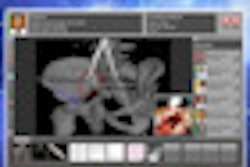Dear AuntMinnie Member,
Radiology has greeted with enthusiasm the discovery that CT lung cancer screening can reduce the death rate of high-risk individuals by at least 20%. But this positive news has been all but drowned out by controversy over exactly who should get the scans.
Most public health authorities have advocated the relatively conservative criteria of the National Lung Screening Trial (NLST), which would restrict screening mostly to those with smoking histories of 30 pack-years or more. But could there be another way?
A group of Canadian and U.S. researchers thinks so. The researchers are advocating screening guidelines that they believe would not only save more lives than the NLST criteria, but could also be more cost-effective as well. The guidelines have been applied to a clinical study cohort for the Prostate, Lung, Colorectal, and Ovarian (PLCO) trial, and are now being used to select participants in a Canadian screening trial as well.
Find out how the guidelines differ from the NLST criteria by clicking here, or visit our CT Digital Community at ct.auntminnie.com.
ECRI's top 10
Every year, nonprofit technology research firm ECRI Institute releases its list of the top 10 technology issues facing hospital executives, and every year it seems like topics related to medical imaging dominate the list. This year is no exception.
Radiology-related issues occupy seven spots on the list, from hybrid operating rooms to PET/MRI. There were also some interesting changes to this year's list compared to the 2012 edition -- breast tomosynthesis has fallen off the new list entirely (perhaps a sign of its increasingly commonplace adoption?), while radiation dose safety has fallen to the ninth spot (perhaps a sign that radiation dose awareness efforts are working).
See the list for yourself by clicking here.
New telemedicine system
Computer giant Microsoft doesn't have a prominent profile in the medical imaging world, but the company still makes technology that's used every day by radiology professionals.
Researchers from Arkansas found that a number of Microsoft technologies can be bundled together into a teleradiology/telemedicine platform that has promise for potentially revolutionizing healthcare, particular in the developed world.
From the Kinect motion-sensing video game controller to the Azure cloud-based data storage platform, the researchers worked with a Microsoft team to develop laptop-based software called Collaboration and Annotation of Medical Images (CAMI).
Learn more about how it works by clicking here, or visit our PACS Digital Community at pacs.auntminnie.com.



















